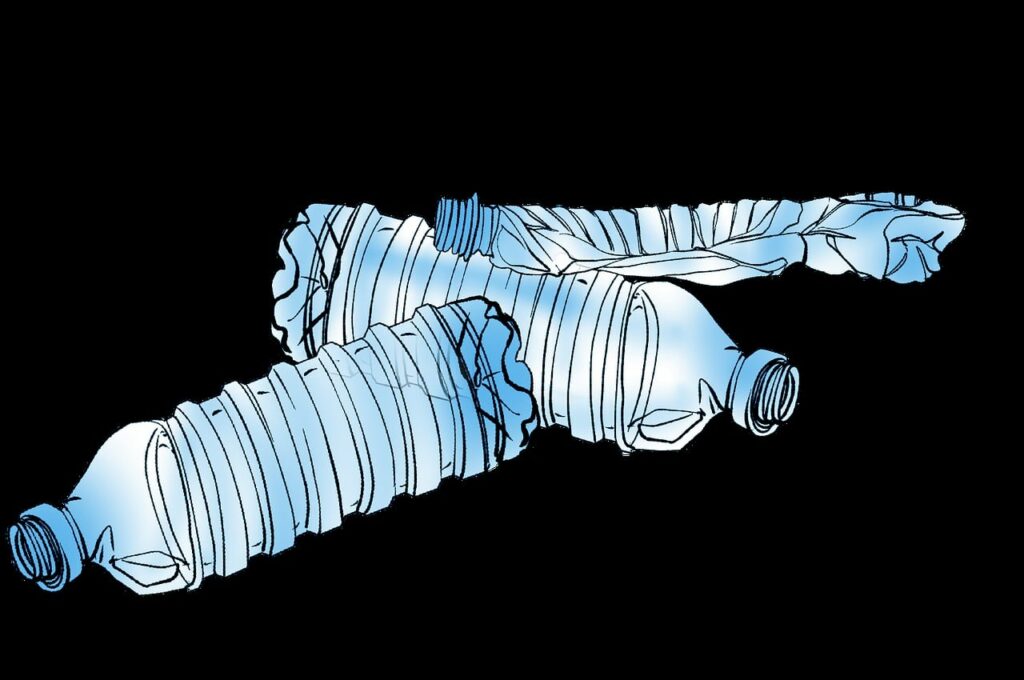Every day, people around the world safeguard their financial future by setting aside funds for emergency needs. But how about securing our well-being in the face of natural disasters? Much like maintaining an emergency fund, preparing for potential calamities – hurricanes, tornadoes, or blizzards – is equally crucial. This can spell the difference between life and death. One of the most essential items on this emergency preparedness list? Water.
Table Of Contents
−- Understanding Your Water Needs
- Choosing and Storing Your Emergency Water Supply
- Strategizing Your Home Water Storage for Emergencies
- Why You Need Home Water Storage
- Emergency Water Supply: The Ideal Amount Per Person
- Selecting Suitable Containers for Water Storage
- Preparing and Sanitizing Water for Emergency Storage
- Rotation and Usage of Water Storage
You may last a few days without food, but without a sufficient supply of water, survival is a challenge. The National Terror Alert (nationalterroralert.com) states that an active person requires at least two quarts of water per day for drinking. In hot climates, this need can even double. Moreover, children, nursing mothers, and those who are ill require more.

Add to this the water required for food preparation and hygiene, and you’re looking at a total of at least one gallon per person, per day. For optimal preparedness, a two-week water supply per family member is recommended.
Understanding Your Water Needs
The figures provided by The National Terror Alert accommodate both drinking water (two quarts) and water for cooking and sanitizing (two quarts). However, remember to consider your specific circumstances when planning your water storage. For instance, those living in hotter regions or at higher altitudes generally consume more water per day. Thus, in some cases, the amount of water needed can double. Be mindful of these factors when calculating your emergency water supply.
Choosing and Storing Your Emergency Water Supply
Bottled water is a reliable option for your emergency stash because it’s both affordable and easy to store. The FDA suggests that bottled water has an indefinite safety shelf life if stored correctly. Since most bottled water comes in plastic containers, store them in a cool, dry, dark place, away from chemicals, to prevent the plastic from deteriorating over time.
Considering The National Terror Alert’s recommendations, a family of four will require at least 28 gallons of water for a week’s supply. As you assess your family’s needs, remember to account for individual ages and health conditions, dietary requirements, and your local environment. Be aware that our bodies demand more water during warmer months to stay adequately hydrated.
Water forms the crux of any emergency preparedness plan. So, how much water have you stored in case of an emergency that limits access to tap water or well water?
Strategizing Your Home Water Storage for Emergencies
Water storage is a vital aspect of emergency preparedness. Building an adequate supply of water at home, along with food and other essentials, can offer peace of mind amidst small or large-scale catastrophes. Additionally, executing long-term water storage correctly can ensure you’re prepared for the unforeseen.
Why You Need Home Water Storage
When discussing emergency preparedness, most people immediately think of natural disasters. Indeed, having a water reserve at home during events like earthquakes or severe winter storms could be a lifesaver.
However, more commonplace incidents, like water main breaks or city water supply contamination, can also disrupt your water supply. Most people often underestimate their reliance on running water, and even a few hours without it can be disconcerting. Keeping a water supply at home can alleviate the stress in such situations.
Emergency Water Supply: The Ideal Amount Per Person
The U.S. Federal Emergency Management Agency (FEMA) suggests storing a minimum of 1 gallon of water per day for each person. This breaks down to roughly half a gallon for drinking and the rest for cooking, dishwashing, handwashing, toothbrushing, and other hygiene needs.
The emergency water supply should be sufficient for at least 3 days. Hence, a family of four should maintain at least 12 gallons of potable water in storage. However, keep in mind that this is a bare minimum. As a trial run, attempt living on this stipulated supply for a few days prior to an emergency. You may discover that a more generous water reserve is preferable.
Selecting Suitable Containers for Water Storage
Your water storage should ideally be housed in food-grade plastic containers. Two-liter soda bottles are an excellent choice as they are affordable and readily available.
Avoid using milk cartons, as they’re not designed for long-term water storage and could eventually rupture. Glass containers also pose a risk due to potential breakage.
Preparing and Sanitizing Water for Emergency Storage
Before you fill used bottles with water, it’s imperative to clean them thoroughly. FEMA advises cleaning the containers with dish soap, rinsing them, and then swishing a solution of 1 teaspoon of bleach and 1 quart of water inside before another thorough rinse.
If you’re storing tap water that’s been commercially treated with chlorine, there’s no need for additional additives to sanitize the water. However, if uncertain, it’s safe to add two drops of non-scented chlorine bleach to the water after filling the container.
Rotation and Usage of Water Storage
Store your emergency water supply in a cool, dry place. For instance, many people choose their basements for storage, keeping the containers elevated off the floor to protect them from potential moisture ingress.
Ensure that each bottle of water is used within 6 months from the date it was filled. It’s recommended to routinely rotate your stored water, positioning the “newest” water at the back and using the “oldest” water first. Chilling the stored water before consumption can enhance its taste.
Whether large or small, disasters necessitate an emergency water supply to see us through. There are several circumstances that could leave us housebound without water, so it’s best to be prepared. By understanding how much water to store and how to use it efficiently, we can better handle any disaster that comes our way.

Jay
Jay is a health and wellness enthusiast with expertise in water quality and nutrition. As a knowledgeable advocate for holistic well-being, Jay successfully manages Type 2 Diabetes through informed lifestyle choices. Committed to sharing reliable and authoritative insights, Jay combines firsthand experience with a passion for enhancing health."
